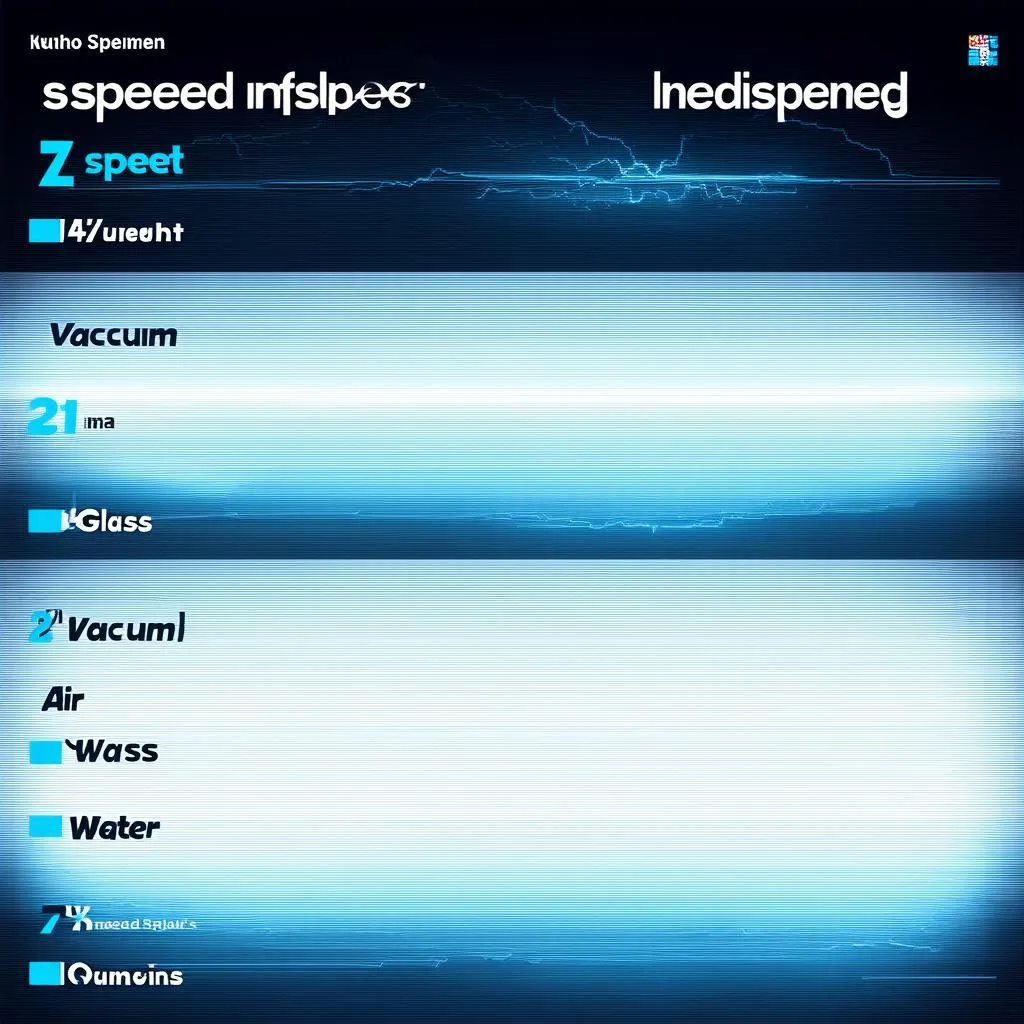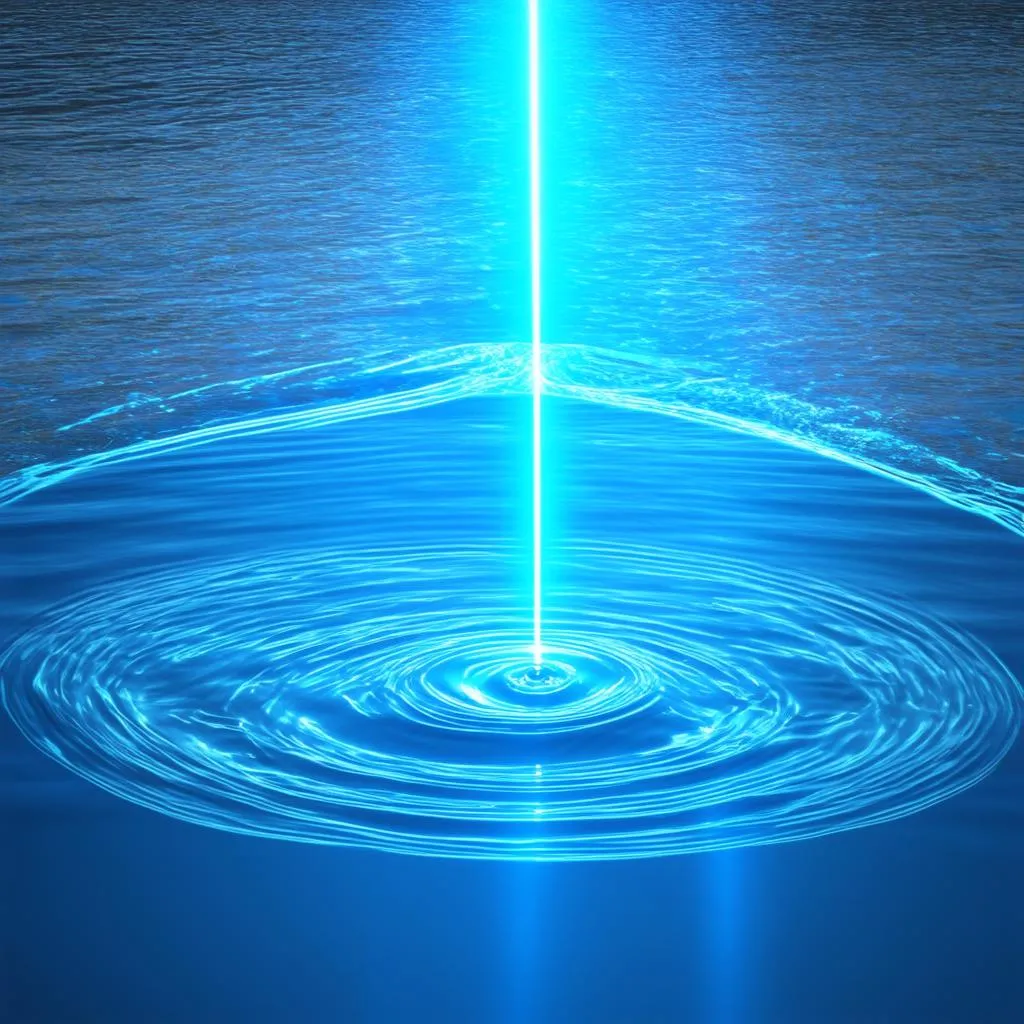Have you ever gazed at the stars on a clear night and wondered how their light reaches us across such vast distances? Or perhaps you’ve marveled at the instant illumination of a room when you flip a light switch? It all comes down to the speed of light and the medium it travels through. Join me as we delve into the fascinating world of physics and uncover the answer to the question: What Medium Does Light Travel Fastest Through?
The Need for Speed: Light’s Ultimate Pace
Light, in a vacuum, travels at a staggering speed of approximately 299,792,458 meters per second (that’s about 670,616,629 miles per hour!). This speed is a constant, often denoted by the letter “c”, and forms a cornerstone of many fundamental laws of physics, including Einstein’s theory of relativity.
But here’s the catch: light doesn’t always travel at this breakneck speed. Its velocity changes depending on the medium it’s passing through.
The Medium Matters: Why Light Slows Down
Imagine you’re a marathon runner, and you have to run through different landscapes. You’d likely sprint effortlessly on a smooth track but might slow down when navigating a muddy field or a crowded street.
Light experiences something similar. When it travels through different mediums like air, water, or glass, it interacts with the atoms within these materials. These interactions cause the light to slow down slightly.
The Winner is… The Vacuum!
So, what medium does light travel fastest through? The answer is a vacuum, a region devoid of any matter, like outer space. Here’s why:
- No Obstacles: In a vacuum, light encounters no atoms or molecules to hinder its path, allowing it to travel at its maximum speed.
Think of light traveling through the vast emptiness between distant stars, reaching us after journeys of millions of years. It’s a testament to light’s incredible speed in a vacuum.
 Light Speed Comparison
Light Speed Comparison
Exploring Light’s Pace: From Air to Diamonds
While light travels fastest in a vacuum, it’s fascinating to see how its speed changes in various mediums:
- Air: Light slows down very slightly in air, but the difference is almost negligible for most everyday purposes. That’s why we perceive light from a lamp or the sun reaching us instantaneously.
- Water: In water, light travels at about 75% of its speed in a vacuum. This reduction in speed is what causes the bending of light, or refraction, making objects submerged in water appear distorted or closer than they actually are.
- Glass: Light slows down even more in glass, to about two-thirds of its speed in a vacuum. This principle is what allows us to manipulate light using lenses, creating everything from eyeglasses to telescopes.
- Diamonds: Interestingly, light travels significantly slower in a diamond than in any of the mediums mentioned above. This slowing down, combined with the diamond’s unique structure, is what gives this precious stone its brilliant sparkle.
 Light Refraction in Water
Light Refraction in Water
FAQs About Light and its Speed
Here are some common questions people ask about the speed of light:
Q: Does light travel faster than sound?
A: Yes, light travels significantly faster than sound. That’s why you see lightning before you hear thunder.
Q: Can anything travel faster than light?
A: According to Einstein’s theory of relativity, nothing can travel faster than light in a vacuum.
Travelcar.edu.vn: Your Guide to Exploring the World
Speaking of light and speed, are you ready to embark on your next adventure? At Travelcar.edu.vn, we can help you plan the perfect trip. From the bustling streets of Hanoi to the serene beaches of Phu Quoc, discover the beauty of Vietnam at your own pace. Visit our website for travel tips, destination guides, and much more.
 Hanoi Street Scene
Hanoi Street Scene
Light Up Your Knowledge
The next time you witness the beauty of a sunrise, the sparkle of a diamond, or even simply turn on a light, take a moment to appreciate the incredible speed at which light travels. It’s a fundamental force of nature that illuminates our world and allows us to experience its wonders.